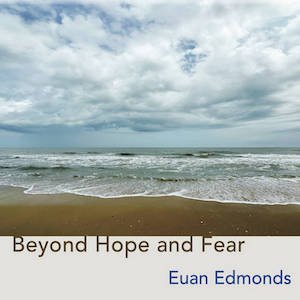Label: GroundUP Music
Personnel - Scott Colley: bass; Edward Simon: piano; Brian Blade: drums // Guests - Chris Potter: tenor saxophone; Becca Stevens: vocals; Jana Dagdagan: spoken word; Richard Rood: violin; Elizabeth Lim Dutt: violin; Kathryn Lockwood: viola; Sachi Patitucci: cello; Rogerio Boccato: percussion.
This newly formed trio, co-led by bassist Scott Colley, pianist Edward Simon, and drummer Brian Blade—all celebrated for their fresh approaches to music—achieves remarkable cohesion in its honest explorations, demonstrating that the distinctive musical voices of its members make a strong whole.
The album opens introspectively with “Nostalgia”, a melancholic 3/4 piece brought to life by Blade’s richly expressive drumming, Colley’s stable foundation, and Simon’s narrative-like piano lines. Blade’s “Kintsukoroi” follows, a beautiful, heartfelt, and asymmetric ballad inspired by the Japanese art of restoring broken pottery.
If “Ellipsis” carries an elusive Bill Evans-esque swing interwoven with exploratory modal jazz, then Colley’s “Three Visitors” nods to Ahmad Jamal, highlighted by warm, lyrical solos from bass and piano. In turn, “The Thicket” channels the inventive energy of Thelonious Monk and Misha Mengelberg, building dynamic polyrhythmic crescendos with a swinging edge.
Simon’s “You Are” is impeccably essayed by the trio, further enriched by Chris Potter’s vibrant tenor saxophone improvisation, Jana Dagdagan’s self-reflective spoken word, and charming string accents. Meanwhile, “I Wanna Be With You” introduces the versatile vocalist Becca Stevens and Brazilian percussionist Rogerio Boccato in a vibrant contemporary pop tune with a colorful R&B tinge.
Throughout the album, Colley, Simon, and Blade demonstrate an indissoluble musical bond. Yet, their effort satisfies without creating a major impact.
Favorite Tracks:
02 - Kintsukoroi ► 03 - Ellipsis ► 04 - The Thicket








































